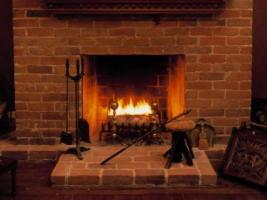
They’re not so far away!
Starting in 2018, wood-burning appliances will be banned unless they meet rigorous new emission standards of
2.5 grams of fine particles or less per hour. The bylaw is among the strictest in North America, said Réal Ménard, the city’s executive committee responsible for the environment. Presently, transforming a stove or fireplace with inserts
so that it is in compliance with the coming regulations costs between $2,000 and $8,000.




Just one question
Is this good or bad?
Both
of course
More on Wood and Pellet Stoves
After reading this last night, I struck up a conversation about this with a friend in Ontario. Her response was as balanced and thoughtful I as I expected, and more eloquent than my own previous comment that it is both good and bad. I did share with her what info I have acquired regarding stoves, perhaps someone here will find it useful.
I personally suffer from chronic bronchitis, which puts me in favor of strict emissions standards. I also care deeply about others and about the environment.
On the other hand, it would become an insurmountable hardship for myself and my partner if we had to comply with emissions of 1.3 g/H right now. When shopping for the wood stove for our new home last year, we did run into many issues with product availability so I can definitely relate to the opposition from this environmental group:
http://montrealgazette.com/news/local-news/environmental-group-says-montreals-wood-burning-bylaw-too-strict
Our issue is that our home is “too energy efficient” for the market, so most stoves available are way over-sized. It was cost prohibitive and perhaps would use more energy to try to get a European version in – plus we really want to shop locally when we can – but Europe has access to smaller rated models.
We went with a Hearthstone Castleton 8030, which has a heating capacity of 45,000 BTU’s and we need something like 26,000. It is relatively clean at 2.7 g/H but doesn’t make the 1.3 cut. Building technology has quickly surpassed stove technology for our market; this is rated for up to 1,500 sq ft but is twice what we need in our 1,650 sq foot home.
If we were to be held to the 1.3 g/H, these are two products that are locally available here in Brattleboro. Pricey, and we would need to purchase fuel instead of using the trees we have available to us for free (or as we did this year, purchase cordwood from a local family vs buy pellets from some company.) This is less of an issue for us since we spend less than $500 to heat annually, less than two cord, but for others we know who use between 10 and 20 cord and harvest their own cordwood, purchasing pellets could be a financial disaster. The 1.3 g/H products:
http://www.hearthstonestoves.com/store/pellet-stoves
Yes.
It is an interesting decision they’ve made up there. I think you summarize it well – good side is very clean air, bad side is cost and availability. Hopefully that second part will change before 2018 so it will be easier to comply.
(I see that older, dirtier stoves can be used if the power fails for a long time, but that doesn’t seem like a long term strategy for anyone.)
Proper Combustion
Happened to notice this article in the current issue of Green Living Journal about maintaining proper combustion. If everyone were to prioritize this, it could make a good bit of difference. Begins on page 16:
http://www.greenlivingjournal.com/pdf/GLjPVweb.pdf